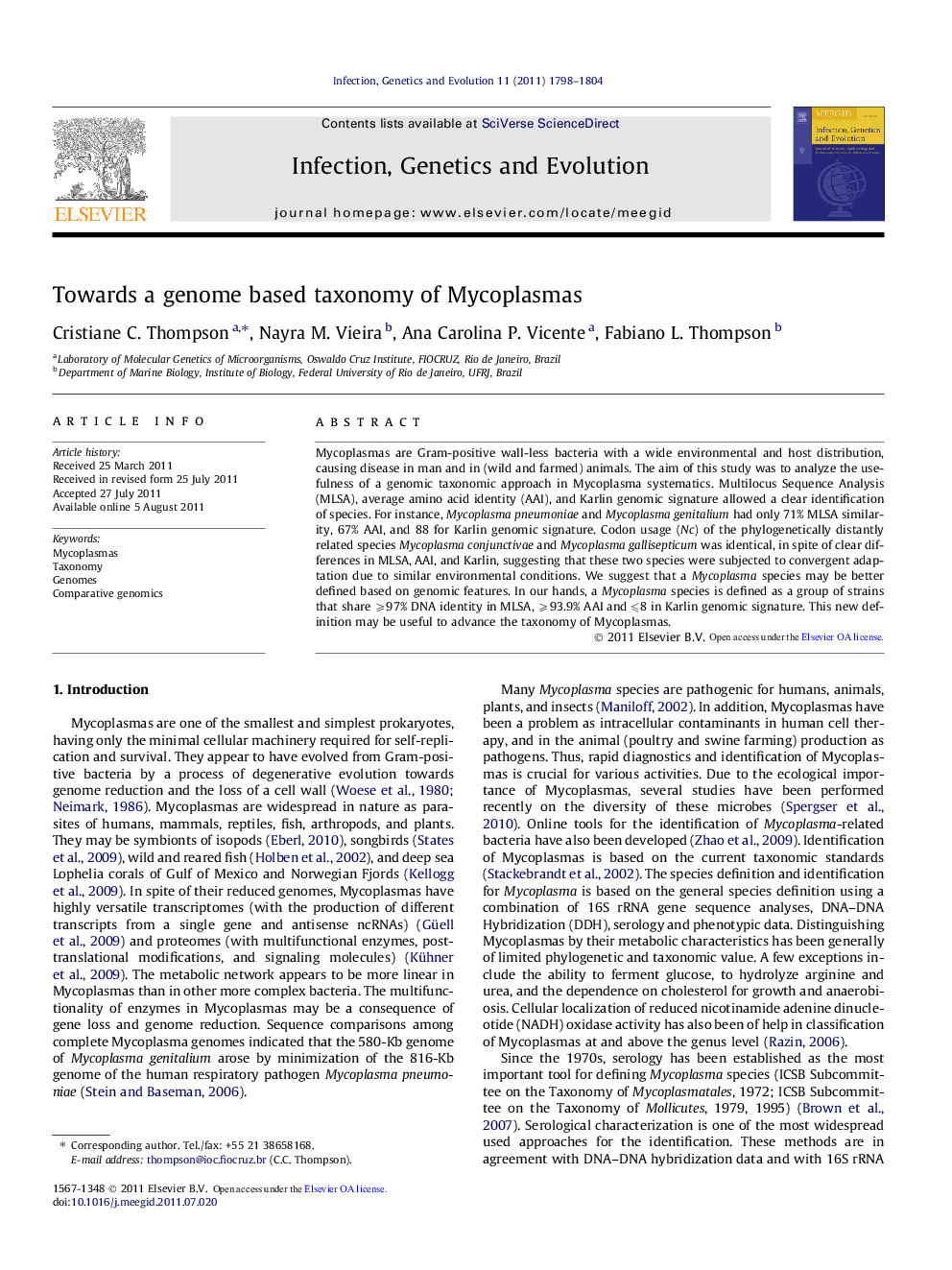| Article ID | Journal | Published Year | Pages | File Type |
|---|---|---|---|---|
| 5911603 | Infection, Genetics and Evolution | 2011 | 7 Pages |
Mycoplasmas are Gram-positive wall-less bacteria with a wide environmental and host distribution, causing disease in man and in (wild and farmed) animals. The aim of this study was to analyze the usefulness of a genomic taxonomic approach in Mycoplasma systematics. Multilocus Sequence Analysis (MLSA), average amino acid identity (AAI), and Karlin genomic signature allowed a clear identification of species. For instance, Mycoplasma pneumoniae and Mycoplasma genitalium had only 71% MLSA similarity, 67% AAI, and 88 for Karlin genomic signature. Codon usage (Nc) of the phylogenetically distantly related species Mycoplasma conjunctivae and Mycoplasma gallisepticum was identical, in spite of clear differences in MLSA, AAI, and Karlin, suggesting that these two species were subjected to convergent adaptation due to similar environmental conditions. We suggest that a Mycoplasma species may be better defined based on genomic features. In our hands, a Mycoplasma species is defined as a group of strains that share ⩾97% DNA identity in MLSA, ⩾93.9% AAI and ⩽8 in Karlin genomic signature. This new definition may be useful to advance the taxonomy of Mycoplasmas.
⺠We analyze the usefulness of a genomic taxonomic approach in Mycoplasma systematics. ⺠Genomic taxonomy is useful for the identification of Mycoplasma species. ⺠We suggest that Mycoplasma species may be identified by whole-genome sequence analysis.
